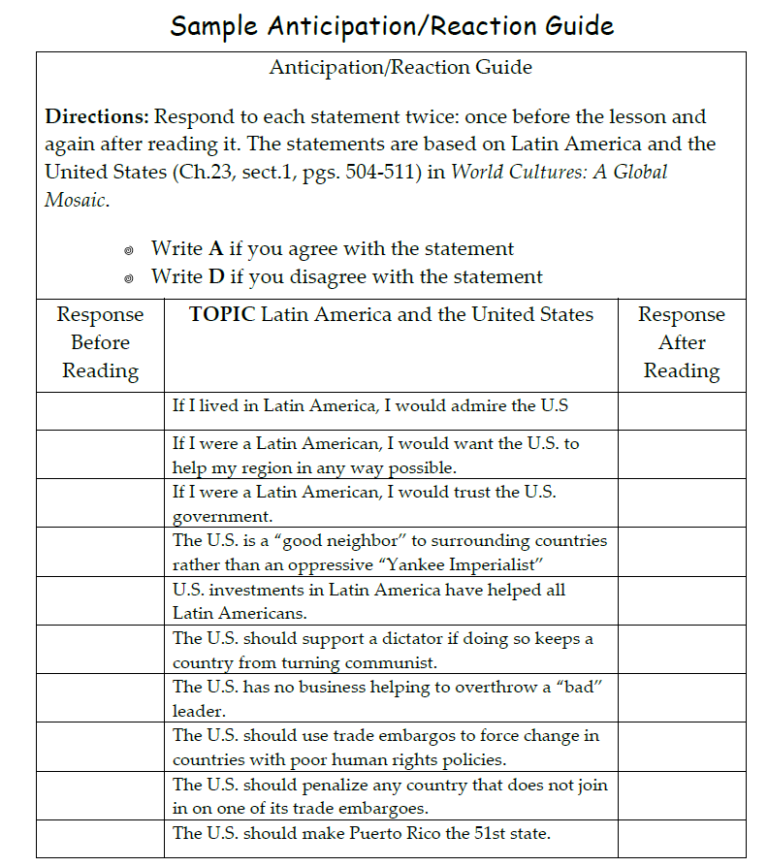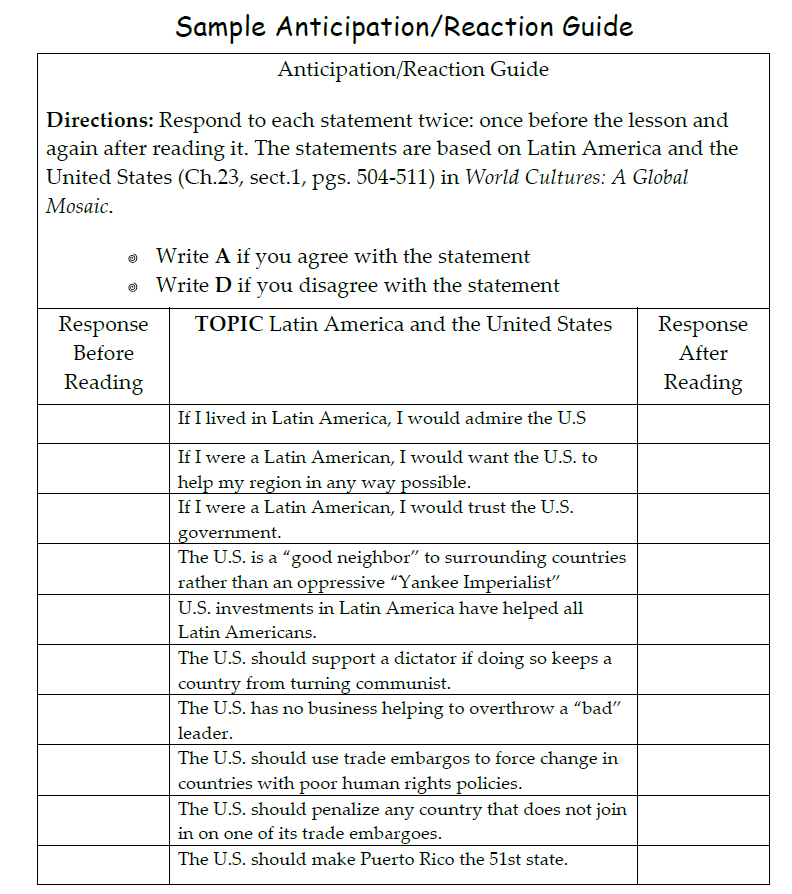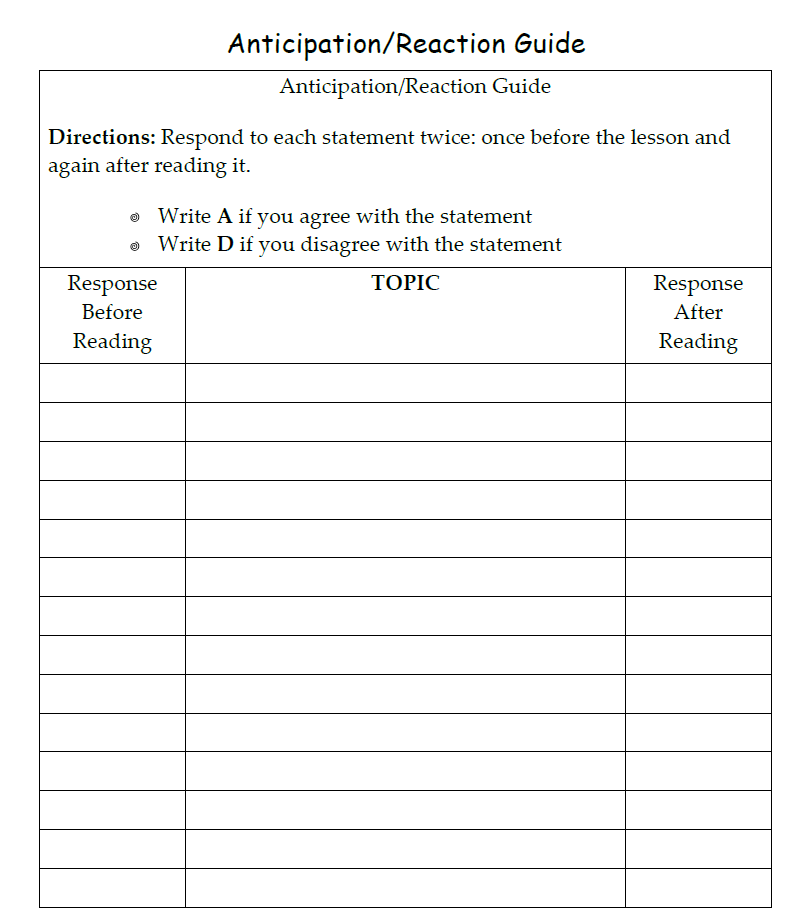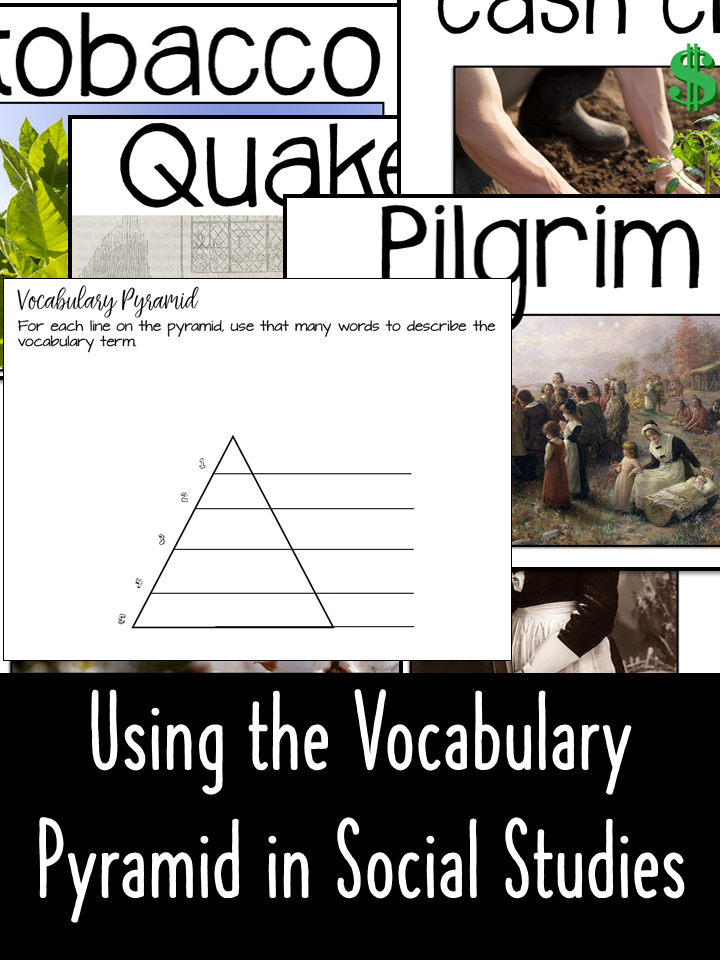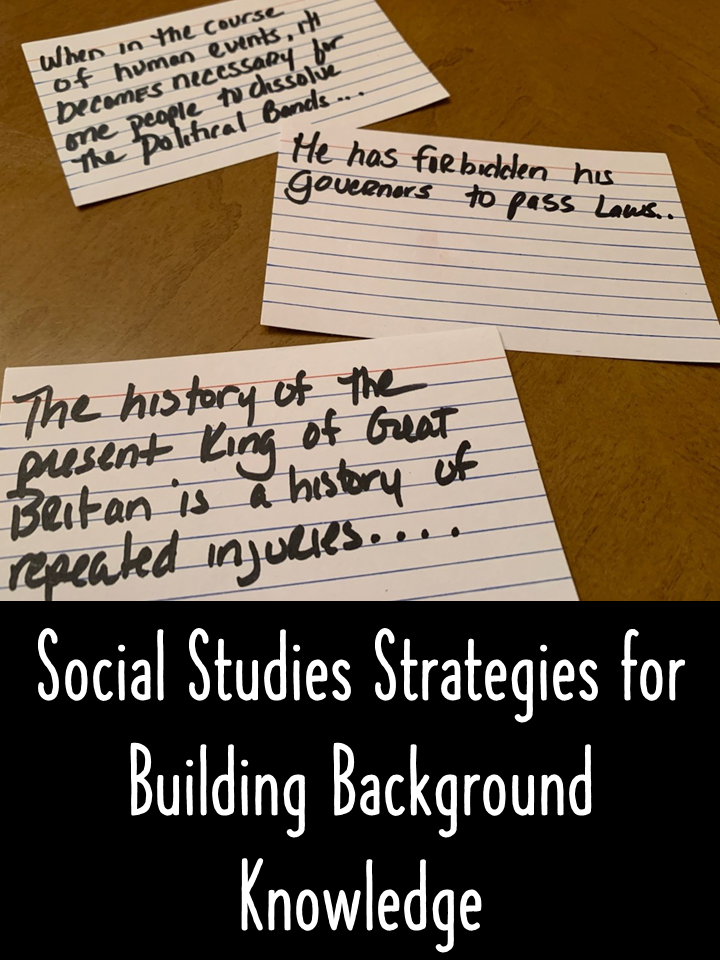PreReading an important aspect of content literacy. But many teachers do not take the time to build schema before they require their students to read. Anticipation Guides have been around for years, but many times are not used effectively. What are some new ways to use them?
What is it?
A strategy used to set purposes for reading texts and to activate prior knowledge to support students as they make connections with the text.
How Does It Work?
- Choose a text.
- Create the Anticipation Guide by constructing a series of statements about specific items or concepts in the lesson.
- Either display the cover or read the opening paragraph and ask the children to answer each question with either yes, no or maybe. The emphasis is not on right answers or to make correct predictions. We want them to form a working hypothesis about the text.
- Read the text aloud. As you read, ask children to let you know when they have found the correct answer to each statement. You should read slowly and stop at places in the text that correspond to each of the statements.
- Bring closure to the reading by revisiting each of the statements.
- The students may then rewrite false statements to make them true to check for understanding.
Why use it?
Anticipation guides facilitate deeper comprehension of text and help students develop metacognition. Through the use of anticipation guides, children know what to look for as they read. As they use the guides, they discover that they have an increased interest in wanting to read so that they can verify their predictions.
Increase Engagement:
Create broad statements to facilitate discussion prior to reading information. Debate the topics with an agree/disagree, “to what extent”, or prioritizing from a most-least focus.
An Example:
Example: What makes a good leader?
Agree Disagree
______ ______ 1. Creates
monuments that
last thousands of
years.
monuments that
last thousands of
years.
______ ______ 2. Kills his enemies.
______ ______ 3. Creates fair laws.
Additional examples of anticipation guides for fiction and nonfiction:

